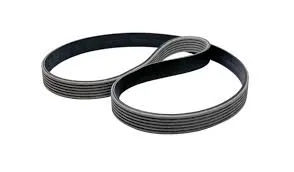- Arabic
- French
- Russian
- Spanish
- Portuguese
- Turkish
- Armenian
- English
- Albanian
- Amharic
- Azerbaijani
- Basque
- Belarusian
- Bengali
- Bosnian
- Bulgarian
- Catalan
- Cebuano
- Corsican
- Croatian
- Czech
- Danish
- Dutch
- Afrikaans
- Esperanto
- Estonian
- Finnish
- Frisian
- Galician
- Georgian
- German
- Greek
- Gujarati
- Haitian Creole
- hausa
- hawaiian
- Hebrew
- Hindi
- Miao
- Hungarian
- Icelandic
- igbo
- Indonesian
- irish
- Italian
- Japanese
- Javanese
- Kannada
- kazakh
- Khmer
- Rwandese
- Korean
- Kurdish
- Kyrgyz
- Lao
- Latin
- Latvian
- Lithuanian
- Luxembourgish
- Macedonian
- Malgashi
- Malay
- Malayalam
- Maltese
- Maori
- Marathi
- Mongolian
- Myanmar
- Nepali
- Norwegian
- Norwegian
- Occitan
- Pashto
- Persian
- Polish
- Punjabi
- Romanian
- Samoan
- Scottish Gaelic
- Serbian
- Sesotho
- Shona
- Sindhi
- Sinhala
- Slovak
- Slovenian
- Somali
- Sundanese
- Swahili
- Swedish
- Tagalog
- Tajik
- Tamil
- Tatar
- Telugu
- Thai
- Turkmen
- Ukrainian
- Urdu
- Uighur
- Uzbek
- Vietnamese
- Welsh
- Bantu
- Yiddish
- Yoruba
- Zulu
Gru . 10, 2024 22:28 Back to list
Understanding Timing Belt Sizes for Optimal Engine Performance and Maintenance
Understanding Timing Belt Sizes A Comprehensive Guide
Timing belts are a crucial component in the functioning of internal combustion engines and other mechanical systems. They synchronize the rotation of the crankshaft and camshaft, ensuring that the engine’s valves open and close at the right times during each cylinder’s intake and exhaust strokes. While they are essential for performance and efficiency, one of the most critical aspects of timing belts is their size, which must be correctly matched to the engine. Failing to do so can lead to catastrophic engine failure.
What is a Timing Belt?
A timing belt is a rubber belt with teeth that meshes with the gears on the crankshaft and camshaft. It is responsible for controlling the timing of the engine’s operations, which is why it’s named a timing belt. Unlike traditional V-belts, which drive accessories such as alternators and water pumps, a timing belt specifically manages the timing of engine components.
Importance of Timing Belt Sizes
Timing belt sizes are crucial for the optimal functioning of an engine. The size of the belt is determined by various factors, including the number of teeth, pitch, width, and length.
1. Number of Teeth The number of teeth on a timing belt corresponds to the engine’s design. Each tooth engages with the gears of the camshaft and crankshaft, so the precise number is vital to maintain synchronization. Too many or too few teeth can lead to misalignment, disrupting the engine’s performance.
2. Pitch The pitch is the distance between the centers of two consecutive teeth. Different engines may require different pitches to ensure smooth operation. A mismatch in pitch can cause excessive wear, noise, and ultimately failure.
3. Width and Length Timing belts come in various widths and lengths to accommodate different engine configurations. A belt that is too narrow may not handle the load effectively, while a belt that is too wide might not fit into the designated space, leading to operational issues.
Selecting the Right Size Timing Belt
timing belt sizes

When selecting a timing belt, it is essential to refer to the vehicle’s manual or consult with manufacturers to find the correct specifications. Here are a few steps to ensure you choose the right size
1. Check Specifications Look up the specifications for your specific vehicle model. Manufacturers will often provide detailed information regarding the timing belt sizes required.
2. Use OEM Parts Whenever possible, use Original Equipment Manufacturer (OEM) parts. While aftermarket options may be available, they might not adhere to the same quality standards or specifications.
3. Consult Professionals If in doubt, consultation with a trusted mechanic or automotive professional can provide valuable insights. They are experienced in identifying the correct timing belt sizes and can offer recommendations based on your vehicle's needs.
Signs of Timing Belt Wear
Timing belts do not last indefinitely; they typically require replacement every 60,000 to 100,000 miles, though this can vary by manufacturer. Signs of wear include
- Cracks or Fraying Inspect the belt’s surface for any cracks, fraying, or significant wear. These can lead to belt failure. - Squeaking or Noisy Operation Unusual noises when the engine is running can indicate that the timing belt or its tensioner is failing. - Engine Performance Issues Any issues related to engine performance, such as misfiring or a rough idle, could relate to timing belt problems.
Conclusion
Understanding timing belt sizes is not just a matter of technical specification; it is integral to the performance and longevity of an engine. By ensuring the right size is used and adhering to recommended maintenance schedules, vehicle owners can avoid potentially severe engine damage. Always prioritize quality and precision when selecting a timing belt, and consult professionals when necessary to keep your engine running smoothly for miles to come.
-
Korean Auto Parts Timing Belt 24312-37500 For Hyundai/Kia
NewsMar.07,2025
-
7PK2300 90916-T2024 RIBBED BELT POLY V BELT PK BELT
NewsMar.07,2025
-
Chinese Auto Belt Factory 310-2M-22 For BMW/Mercedes-Benz
NewsMar.07,2025
-
Chinese Auto Belt Factory 310-2M-22 For BMW/Mercedes-Benz
NewsMar.07,2025
-
90916-02660 PK Belt 6PK1680 For Toyota
NewsMar.07,2025
-
drive belt serpentine belt
NewsMar.07,2025

